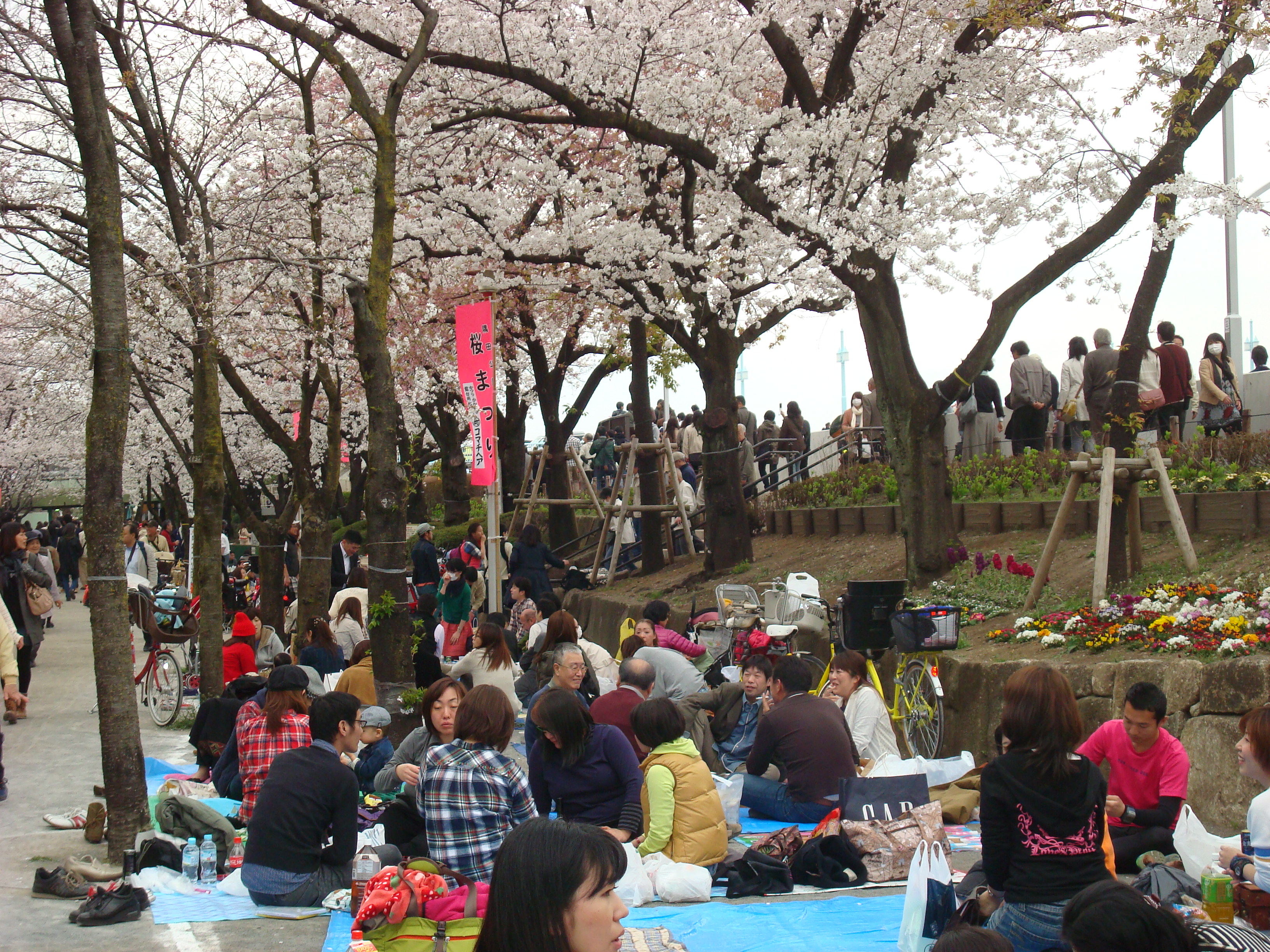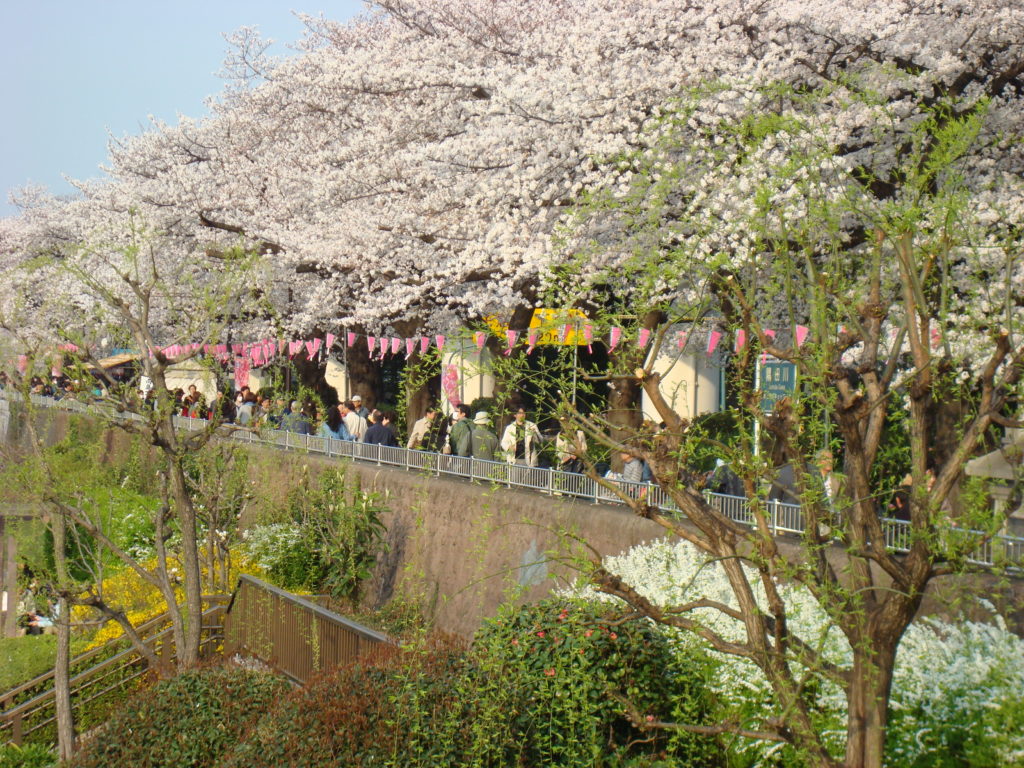I Tracked D.C. Cherry Trees in Tokyo
On Saturday I literally walked in Eliza Scidmore‘s footsteps. On a crisp spring day, during my research trip to Japan, I took the train to Tokyo for cherry blossom viewing at Mukojima.
Strolling and partying beneath the blooming trees reenacts an ancient Japanese tradition known as hanami (cherry tree viewing).
Eliza Scidmore got her idea of planting cherry trees in Washington from the cherry-tree parks she visited in Japan, beginning in the 1880s. Every city and town had favored parks spots and gardens. Mukojima left a great impression on Scidmore.
She envisioned, she wrote many times, creating a “Mukojima on the Potomac.” The image led to the pathway of Japanese cherry trees that now rings the Tidal Basin in Washington. The scene gets part of its charm from the interconnected branches of trees, which form delicate canopies of petals that envelop humanity.

Picnicking and cherry blossom viewing at Mukojima in Tokyo, an inspiration for Eliza Scidmore in the late 19th century (Photos: Diana Parsell)
‘Hanami’ Celebration
It wasn’t just the blossoms that Scidmore wanted to import. She loved the celebrations when the Japanese turned out in droves to see the trees in peak bloom.
The jolliest place to be was Mukojima. It had the spirit of a “people’s park,” where people from all walks of life mingled in a carnival atmosphere. Jugglers, acrobats, and orators performed, vendors touted their wares. Everyone picnicked and drank lots of saké.
The place has changed a lot since Scidmore’s time, of course. Most of the original trees were destroyed in the Great Kanto Earthquake of 1923 and had to be replanted.
Also, the Sumida River today is wider. Tall buildings tower above one side of the riverbank; the other has a raised freeway running parallel to a stretch of cherry trees. But the display is still glorious, and the spirit of hanami remains the same.
It was a joy to be there and experience it. The trees bloomed about two weeks earlier than expected here in Japan, so my timing was perfect!
Photo Gallery
Office colleagues from EdiSon, a computer engineering firm that develops software for waste management, spent the day together at Mukojima. The company’s founder and president, Hiroki Sunaga, joined the group (second from right, in neck scarf).
Along a stretch of cherry trees at Mukojima, lanterns line the path for night viewing. Crowds gravitate to outdoor stands offering fried noodles, grilled meat, sweets, and cotton candy.
I’m told this band of merrymakers I posed with was reenacting a traditional form of “advertising” in Japan, when costumed messengers roamed the streets making announcements.
A hot pastime this year at Mukojima was photographing the traditional cherry trees juxtaposed with Tokyo’s modern new tower known as the “Sky Tree.”
A young girl on an outing with her parents gets a tasty introduction to cherry tree celebrations at Mukojima.
Kyoko Tanitsu, left, and Michiko Okubo were my companions and guides at Mukojima. Michiko lives in Tokyo’s Adachi Ward, where the 3,000 cherry tree saplings sent to Washington and planted in 1912 were cultivated.

(Photo: Wakako Hisaeda)






Diana,
Lovely pictures!! You are so lucky that the sakura blooming in Tokyo this year is much earlier than usual years so that you are just in time to view them. If you came a week later, maybe they should have gone already! So, the blossom viewing, Hanami, is a little different from usual years: usually, we do Hanami as welcome parties for new staff and freshmen at companies as our year at offices and schools starts in April. Though, this year the occasion is to farewell people leaving offices and schools as it is the end of the year. You are here in a special year!!
This was amazing Diana! Great, great work!
How very fun — loved the photos and glad to see the cherry blossoms are doing their thing somewhere. It’s snowing as I write in Washington, DC, and the trees here are still in tight buds, except for the Okame.